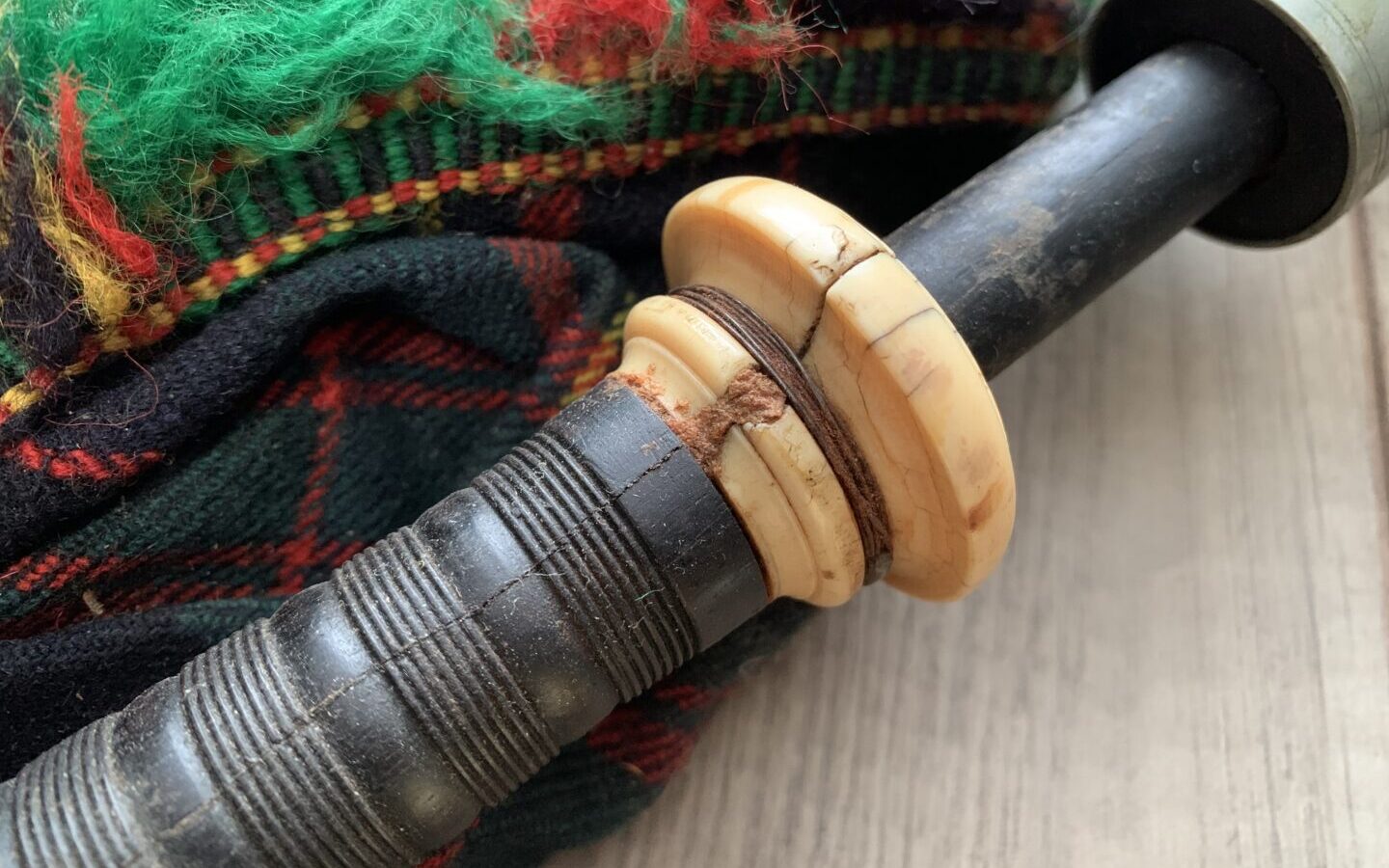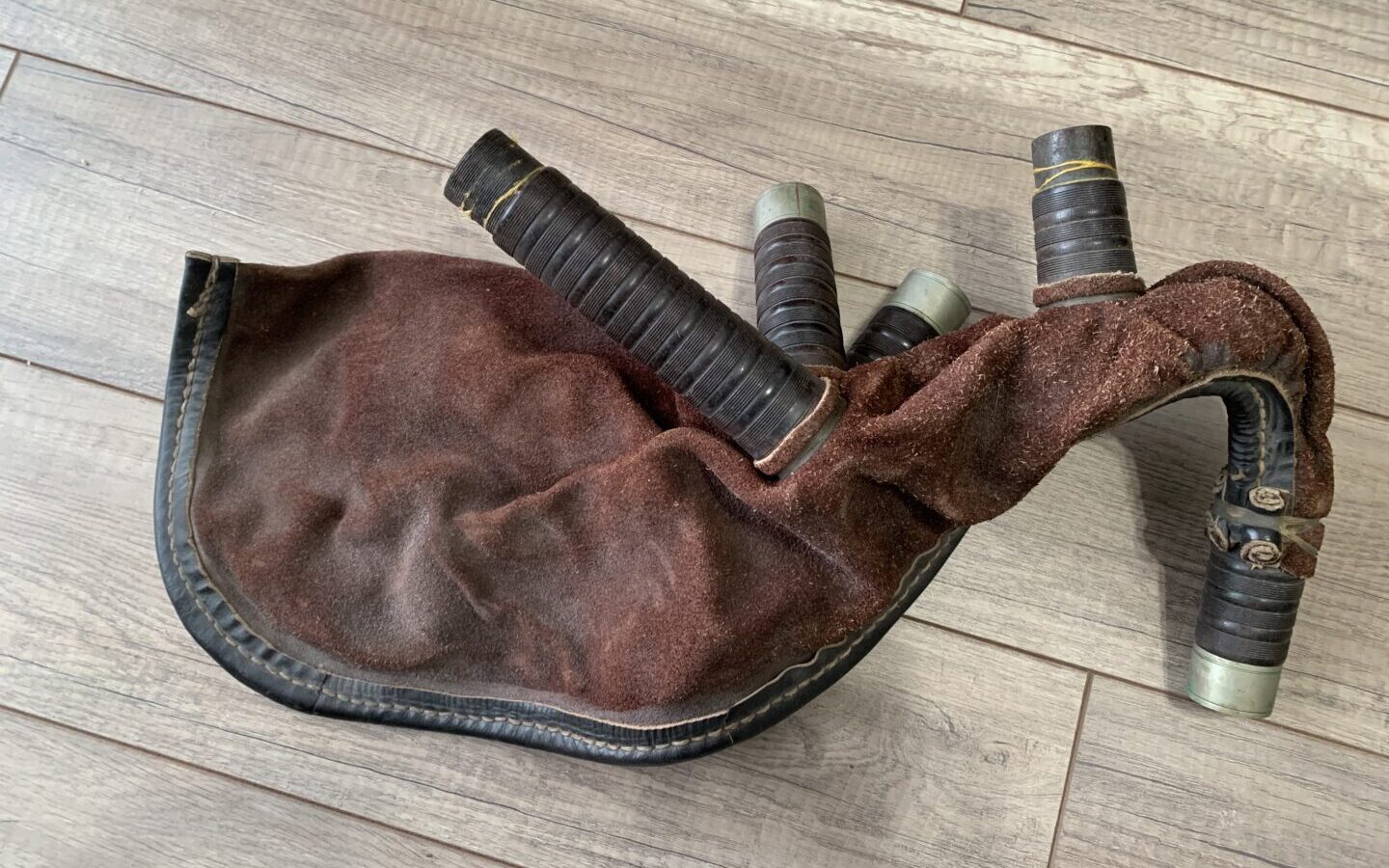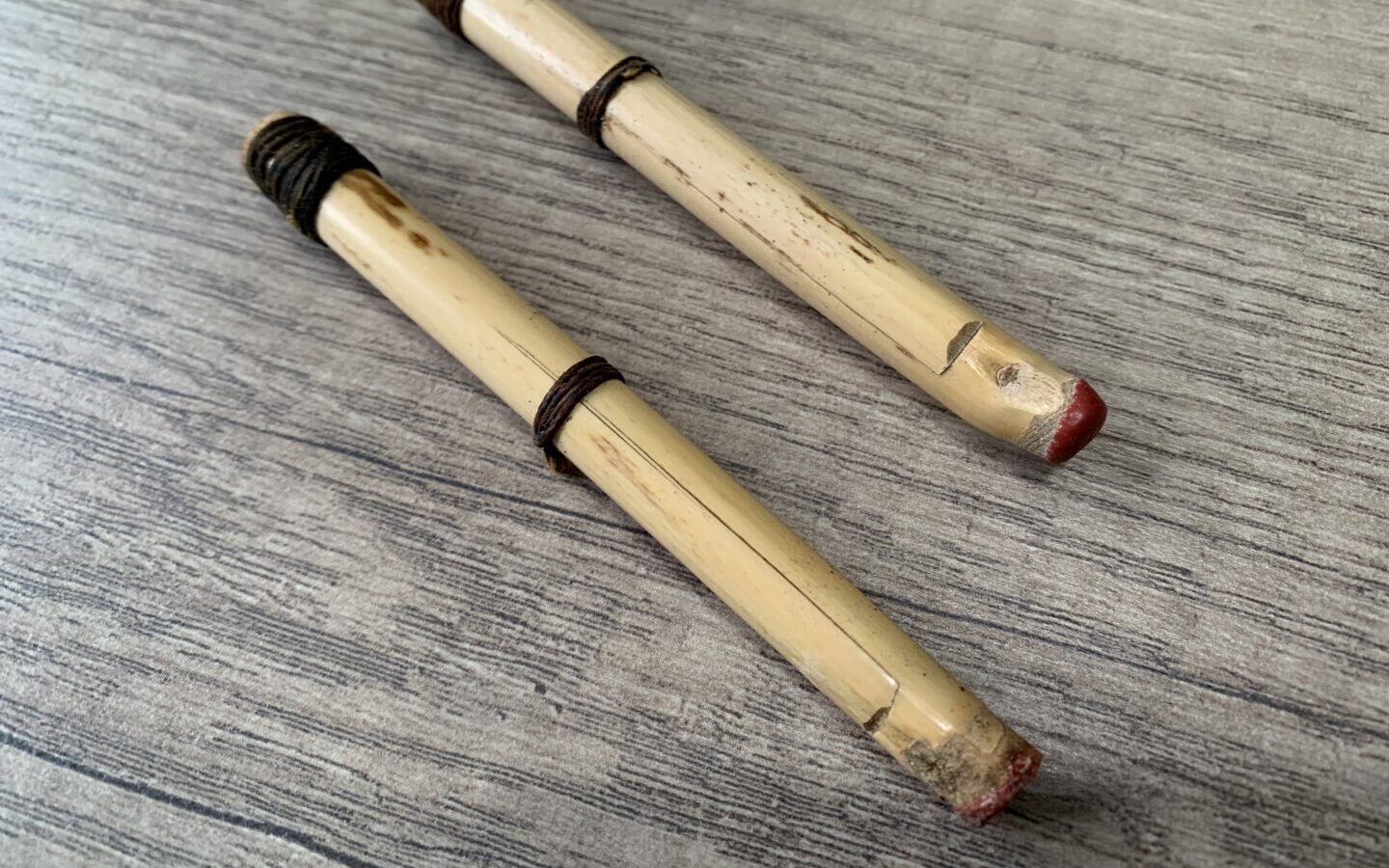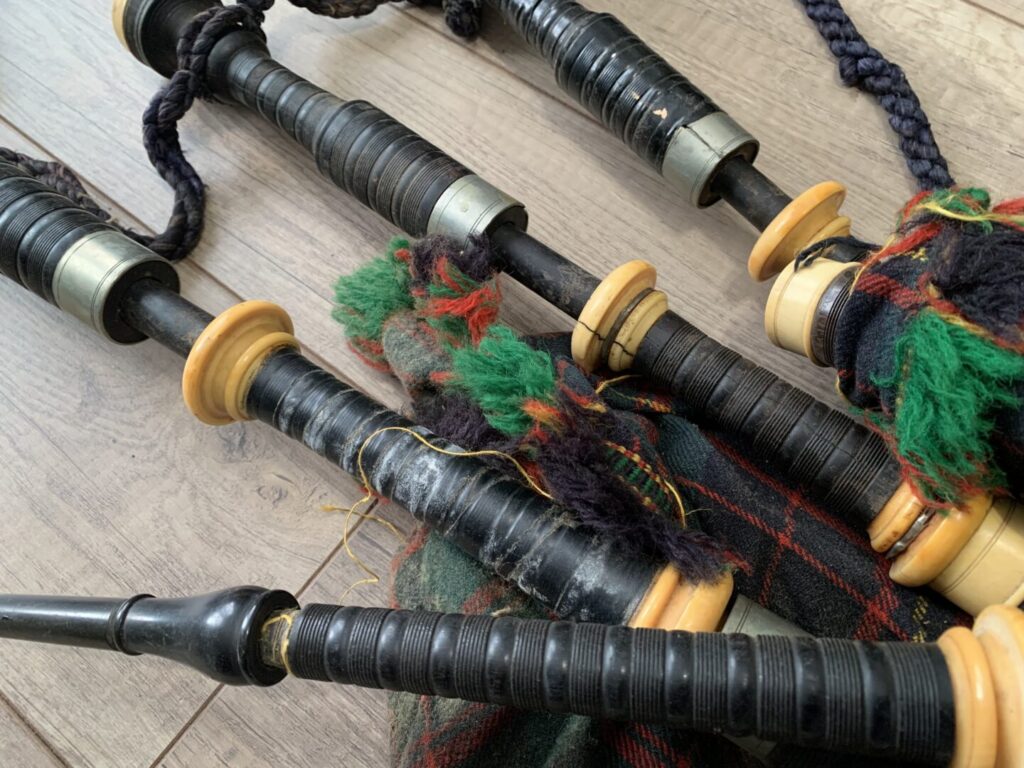This is the age old question for those who are unfamiliar with bagpipes but maybe you’re a piper and want to know what your instrument is worth – just to know. Other people are looking to insure them and need an evaluation. Determining the value of your instrument on your own can be a challenge if you don’t have the experience, besides this, most insurance companies need an official appraisal, and that is where we can help you. We offer years of know-how to get you an accurate valuation.
Often we’ve heard from people who have had a setup of bagpipes passed down through the generations and without the familiarity of the instrument, that can make it a challenge to get to the bottom of this great debate.
Insuring your bagpipes? Separation or Divorce?
Maybe you need you would like to insure your bagpipes, or you may need your pipes appraised to help sort out your assets during the process of separation/divorce. Whatever your circumstances, you will need a reputable valuation of your instrument. We can provide that document. Fill out our Appraisal Form and you will receive a complete, professional appraisal in 7-10 days.
In the mean time, maybe you just want to inspect your bagpipes on your own. Here are a few things to look for.
What kind of bagpipes do you have?

This particular article will focus on the Great Highland Bagpipes (GHB) and it is important that you know what type of instrument you are looking at. Read on if you already are familiar with the highland bagpipes. The GHB all look very similar, with three drones a blow pipe and a chanter.
What should I look for?
There are many areas on the pipes that will provide the information necessary to value your pipes. The materials used to make the bagpipes will directly affect the value of the instrument. Often the pipe maker and the age will impact the valuation as well. Close inspection of your pipes will take you a long way, but some pipes are so rare and indistinguishable that we must rely on experience. In the meantime, you can start looking more closely at the list we have provided below:
Are they complete?
The first thing to determine is what you have. If you only have the wooden parts, most people call them “sticks”. That won’t necessarily lower the value, but obviously the bagpipes cannot be played like this, so the buyer will need more parts to complete them and must expect to spend more money to get them up and running.
Condition

This is a very important point. Look for nicks, scratches and more importantly cracks in the stocks, blowpipe or drones. Because bagpipes use our breath to inflate them, the moisture can wreak havoc on wood over the years. Just because they have a crack doesn’t mean they are worthless, but refurbishment by a very specialized pipe maker can bring the life back into those bagpipes. We can help you find the right people to do that too.
Pipe Maker
Sometimes there are markings on the pipes that will show who made the bagpipes, but don’t be surprised if you can not find a name marked anywhere. It is common to find a name etched into the face of the bagpipe chanter, but that doesn’t mean that the chanter matches the rest of the set of pipes.
Wood or Plastic Drones
The most common material for bagpipes tends to be blackwood for its extremely dense characteristics, although boxwood is also a common material from days gone by.
Mounts

The mounts are strictly decorative parts on the drones and they can make the pipes appeal to the onlooker. Mounts can be made out of so many different materials, some have been listed below:
- Ivory – often imitated, it is sometimes difficult to distinguish the difference between natural bone and manmade materials. Sometimes its extremely obvious. The key feature to ivory is the crosshatching that can be only seen from one angle.
- Silver – If the silver is real, the silversmith would have stamped his work which makes it fairly easy to find when they were produced. That being said, the silver work could have been added at a different time and we have seen silverwork moved from one set of pipes to another.
- Nickel – a material that has been used for ages. There can be some green tarnish on the metal that gives it away.
- Aluminum – this material can look like silver or nickel to those who don’t have a trained eye, but typically it ages with a dusty grey finish over time.
- Wood – many materials including rosewood, boxwood, blackwood
- Bone – some very old pipes used different bone materials for mounts. There has also been a bit of a resurgence in using bone for mounts starting in the 1980’s. Antlers from bison, elk and moose can be used and make for a very attractive set of pipes.
Pipe Bag

Pipe bags come in different sizes and configurations. The list below is only a highlight to the subject. There are two categories for pipe bags (plus moisture control)
- Leather – Sheep skin, goat skin and cow leather are all options for pipe bags these days. If the pipes have not been played in over a year, we recommend that the leather bag is replaced before they are used again because the leather has likely dried out beyond use and will not hold air.
- Synthetic – A number of man made pipe bags are available including Canmore (Gortex), Ross, Bannatyne and others. These pipe bags tend to last a very long time and the only thing you’ll have to worry about is if they have a hole or the grommets for the stocks have sprung a leak.
- Moisture Control Systems – this is not a pipe bag, but you may find this inside the bag. It is used to reduce the excess moisture from wet blowers. This will add a small amount of value to the pipes, but will need to be sanitized if you plan to sell your pipes.
Reeds

There are many makers of reeds and we can help you determine exactly what you have
- Chanter Reed – most times the cane chanter reed will not be good after they have sat for a while. Beyond that, reeds are very specific to the pipers blowing strength. Besides this, it is almost impossible to sanitize a reed without ruining it so most likely the reeds won’t be useful if you are selling your bagpipes to another piper.
- Drone Reeds – There are so many makes and materials used these days but they fall into two categories:
- Cane – these are made of a natural material and most times they are not useful to the next piper unless it is a very experience player who knows how to manipulate the reeds to work well.
- Synthetic – these reeds add great value and have been manufactured since the late 1980’s. There has been a lot of progression over the years making the newer reeds better than old ones. The list of bagpipe drone reeds is long. If you are uncertain which reeds you have, we can help.
Pipe Chanter
The pipe chanter is critical to the instrument, but the pitch of the chanter is different now than it was even 15 years ago. The pitch of the bagpipe chanter has progressively gotten sharper since about 1950. Vintage chanters can be extremely difficult to reed, so do not expect that your vintage chanter is playable. If a piper plans to start playing with a band, they will typically provide a matched chanter for the musicians. Keep in mind that older chanters don’t typically hold a lot of value. In summary, chanters are manufactured in two materials:
- Plastic – Most chanters that were made within the past 30 years are made of plastic and are great for new pipers. As stated above, chanters are made in different pitch ranges, so it is critical to determine what pitch the chanter is made for.
- Wood – If you have a wooden pipe chanter, be sure that it is in good condition because the wall of the chanter is very thin, they crack very easily. Typically it is not worth repairing them. Unless you are playing on your own, older chanters don’t offer great value.
Practice Chanter
Most sets of pipes include a practice chanter and it’ll be necessary when practicing indoors, especially as a piper learns to play. They are manufactured in two materials:
- Plastic – Most chanters that were made within the past 20 years are made of plastic and are great instruments for beginners or experienced pipers.
- Wood – If you have a wooden practice chanter, be sure that it is in good condition. Sometimes they get cracked due to high moisture and typically it is not worth repairing them.
The above information only begins to scratch the surface on the subject. If you have specific questions, please reach out to us for more information. Feel free to fill out our Appraisal Form for more information.


